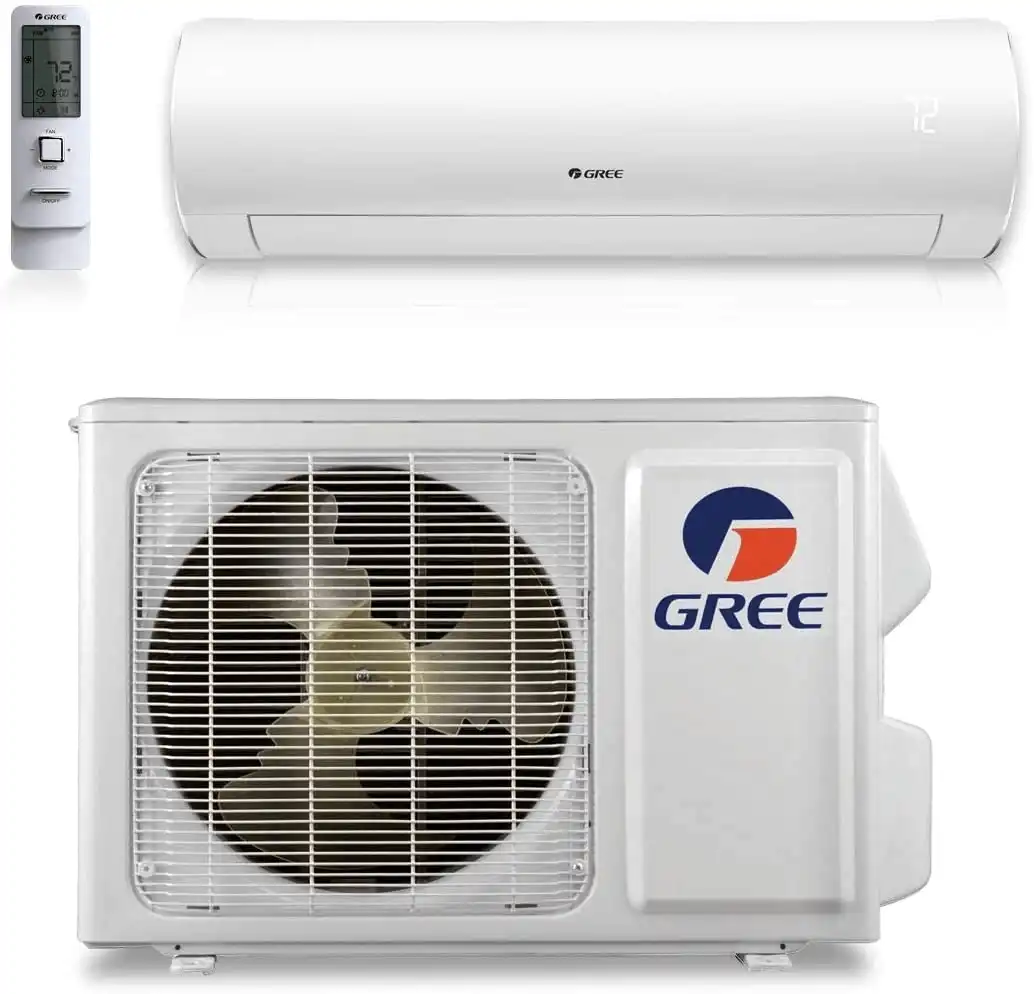
How to Run Drain Pipe for a Mini-Split System
How to Run Drain Pipe for a Mini-Split System
Mini-split systems are popular in both residential and commercial settings due to their energy-efficient design and flexible installation options. Rather than generating heat, these systems move it from one area to another using refrigerant. Mini-split installation is relatively straightforward compared to other types of HVAC systems, however, proper drain pipe installation remains a critical aspect of any mini-split job. A well-designed and correctly sloped drain line ensures that the condensation produced during cooling flows away from the indoor unit without causing water damage, mold, or operational issues.
For HVAC contractors, mastering this aspect of installation is essential for upholding your professional reputation and safeguarding the client’s property. From choosing the right route to adhering to local codes, this guide provides an in-depth look at how to run drain pipe for a mini-split effectively, ensuring long-lasting and trouble-free performance.
Why a Mini-Split Drain Line Is Important
During cooling mode, a mini-split system collects moisture in a drain pan inside the indoor air handler. This moisture must be safely directed away from the unit via a mini-split drain line to avoid a variety of problems:
Failure to remove condensate efficiently can lead to overflowing drain pans and water leaks that damage walls, ceilings, or other structural elements. In cases where water accumulates undetected, the unit itself can sustain damage, reducing its operational lifespan. Equally concerning is the potential for mold or mildew growth, fueled by standing water or slow-draining lines. These microbial issues present health hazards for occupants and can create unpleasant odors in the home or workspace.
A properly installed drain line thus plays a central role in maintaining both the health of the mini-split system and the safety of the surrounding environment. It is, in many respects, the simplest yet most vital defense against costly repairs and compromised indoor air quality.
Planning Your Mini-Split Condensate Drain Line Installation
A successful mini-split condensate drain line installation begins with careful planning. Before any pipes are cut or holes drilled, it's crucial to determine the most effective way to carry water away from the indoor unit. Whenever possible, HVAC professionals rely on gravity drainage to achieve a simple, low-maintenance solution.
The drain location should ideally lead outside, well away from the structure's foundation. Alternatively, it can terminate at an existing indoor drain, such as a laundry sink, floor drain, or indirect sewer connection with an air gap. In every scenario, local plumbing codes play a decisive role in shaping the final plan. Different regions may mandate a specific slope, require certain materials, or forbid direct connections to the sewer line without proper ventilation. By verifying these regulations beforehand, you ensure the installation is code-compliant and avoid having to revisit the project later for costly adjustments.
Slope is another top priority. For drain lines less than 2.5 inches in diameter, follow the US plumbing industry standard of a ¼” per foot slope to ensure efficient drainage, allowing gravity to carry the water reliably out of the building. In longer or more complex routes, you may need to plot multiple measurements to confirm that you maintain a consistent downward angle. Any portion of the pipe that flattens or slopes upward can trap water, increasing the likelihood of backflow or clogging.
Consider pipe length and potential obstacles. The shorter and straighter the run, the more efficiently water will flow. Minimizing bends reduces friction and prevents areas where debris could accumulate. If the line must pass through walls or other structural elements, plan those penetrations carefully to maintain slope and ensure they can be sealed properly for energy efficiency and pest prevention.
For the condensate drain system, GREE recommends using hard polyvinyl chloride (PVC) pipe and matching connectors, with the same or larger diameter as the unit connection. Additionally, it's important to insulate all exposed condensate pipes and hoses – not just flexible ones – to prevent sweating and potential water damage.
In situations where gravity drainage is not feasible due to the indoor unit's location or other constraints, GREE systems often include or recommend the use of condensate pumps. These pumps can efficiently move water to an appropriate drain point, even against gravity. Built-in pumps allow a maximum 11-inch vertical lift within the first 12 inches. For vertical heights greater than 11 inches, an auxiliary condensate pump with a float valve that automatically shuts off the system is required.
When installing multiple units with a common drain line, GREE provides specific recommendations:
- Individual Traps: Install a dedicated P-trap for each unit before merging drain lines.
- Shared P-Trap with Venting: Use a single P-trap for all units paired with a vent pipe to equalize air pressure.
By following these guidelines and GREE's specific recommendations, you can ensure a properly functioning condensate drain system that protects your mini-split unit and your property from water-related issues.
How to Run Drain Pipe for a Mini-Split: Route and Slope Essentials
Once you've determined a suitable drainage point and confirmed your approach with local codes, you can outline the route for the drain line. In many projects, the line proceeds either through an interior wall cavity or along an exterior surface before terminating outside or at an approved indoor drain.
When routing through a wall cavity, drilling a hole at a 5° to 10° downward angle to the outdoors is a practical way to maintain slope and ensure water doesn't pool. A wall sleeve—such as a short section of slightly larger pipe—protects the drain line from sharp edges within the wall. After feeding the pipe through, seal the penetration with putty or foam insulation to block drafts and pests.
If running the drain line along an exterior surface, it's common to secure it with brackets or clamps at regular intervals. This adds stability and prevents sags or kinks that disrupt water flow. The outside termination point should discharge condensate safely away from paths, windows, or doors, ensuring that water doesn’t pool near the foundation. GREE specifies that the drain should terminate 6 inches above grade and notes that direct sewer connections require an air gap in most jurisdictions to comply with plumbing codes.
Again, in some cases, gravity drainage simply isn't feasible. For instance, if the indoor unit is installed below ground level or if external walls are inaccessible for a downward slope, a condensate pump may be necessary. These pumps enable contractors to route condensate upward or across long distances. Choosing a high-quality pump with reliable float switches is essential to minimize overflow risks and service callbacks. GREE requires that auxiliary pumps include a float valve to shut off the system if the pump fails.
Connecting the Mini-Split AC Drain Line to the Indoor Unit
Most indoor air handlers feature a molded drain pan with an outlet port near the bottom of the unit. When connecting the mini-split AC drain line to this port, use the provided drain hose to connect to PVC pipe. PVC cement is not permitted for direct connections to the GREE unit. Ensure the connection is secure and watertight to prevent leaks.
Regardless of the chosen material, ensure the connection is secure. GREE specifies that you should use piping of the same diameter or larger as the unit connection. A water-tight seal at the unit prevents minor leaks that can remain hidden behind the air handler until damage becomes extensive.
How to Avoid a Mini-Split Drain Line Clogged Scenario: Testing & Maintenance
Even the most carefully planned route can develop issues if the system isn't tested or maintained over time. The simplest way to confirm the drain line is working after installation is to carefully and slowly add 8-10 ounces of water to the indoor unit's drain pan and verify that the water drains easily out the condensate drain hose.
Maintaining the line once the system is operational is equally important. Small amounts of debris can accumulate, eventually triggering a mini-split drain line clogged situation. GREE recommends checking and cleaning the drain pan and drain line every 3-6 months to prevent clogs, water damage, and mold growth. This is particularly important in humid climates where microbial activity is higher.
Examining the outlet and checking for any signs of standing water should be part of these regular maintenance checks. As a contractor, it's vital to emphasize to clients the importance of these routine inspections and cleanings to ensure the system's longevity and efficiency.
GREE stresses that drain pipe installation should be done by a qualified HVAC professional to ensure proper installation and prevent leaks. By following these guidelines and GREE's specific recommendations, contractors can help ensure a properly functioning condensate drain system that protects the mini-split unit and the property from water-related issues.
Selecting the Right Materials for Your Mini-Split Condensate Drain Line
In addition to route planning and slope management, choosing the correct mini-split condensate drain line material plays a key role in preventing leaks, blockages, or early pipe deterioration. GREE provides specific guidance for material selection:
- PVC Pipe: GREE recommends the use of hard polyvinyl chloride (PVC) pipe and matching connectors for all gravity drain systems. The PVC pipe must be the same diameter or larger than the unit drainage port. For example, ceiling cassettes typically have a 1.2" OD drainage port. PVC is robust, widely code-approved, and its smooth interior walls prevent debris accumulation.
- Flexible Hose: GREE allows flexible hose use, but only for specific applications. It's limited to connecting to factory drain ports (5/8" OD) and requires insulation to prevent sweating. However, GREE does not recommend flexible hose as the primary drain line material.
Lastly, local plumbing codes may specify acceptable materials. Reviewing these standards ensures you remain compliant and pass any required inspections.
Insulation Requirements
GREE recommends insulation for:
- All rigid PVC pipes exposed to unconditioned spaces
- Flexible hoses (required regardless of location)
- Joints and connectors
This prevents surface sweating, which can cause moisture damage even in properly sloped systems.
Run Mini-Split Drain Pipes with Confidence by Working with GREE
Properly installing and maintaining a mini-split condensate drain line is crucial for preventing water damage, mold growth, and efficiency losses in your clients’ mini-split systems. By following these best practices—carefully planning the route, maintaining the right slope, choosing durable materials, and regularly inspecting for clogs—you’ll deliver professional, long-lasting results every time. If you need more information on how to run drain pipe for a mini-split or want to explore other HVAC solutions, be sure to check out our instructional videos and FAQ page for detailed guidance. If you’re a homeowner looking for expert help or still have questions, our Contractor Locator tool can connect you with a certified GREE Comfort specialist in your area who can provide installation, troubleshooting, and ongoing maintenance to keep your mini-split system performing at its best.




